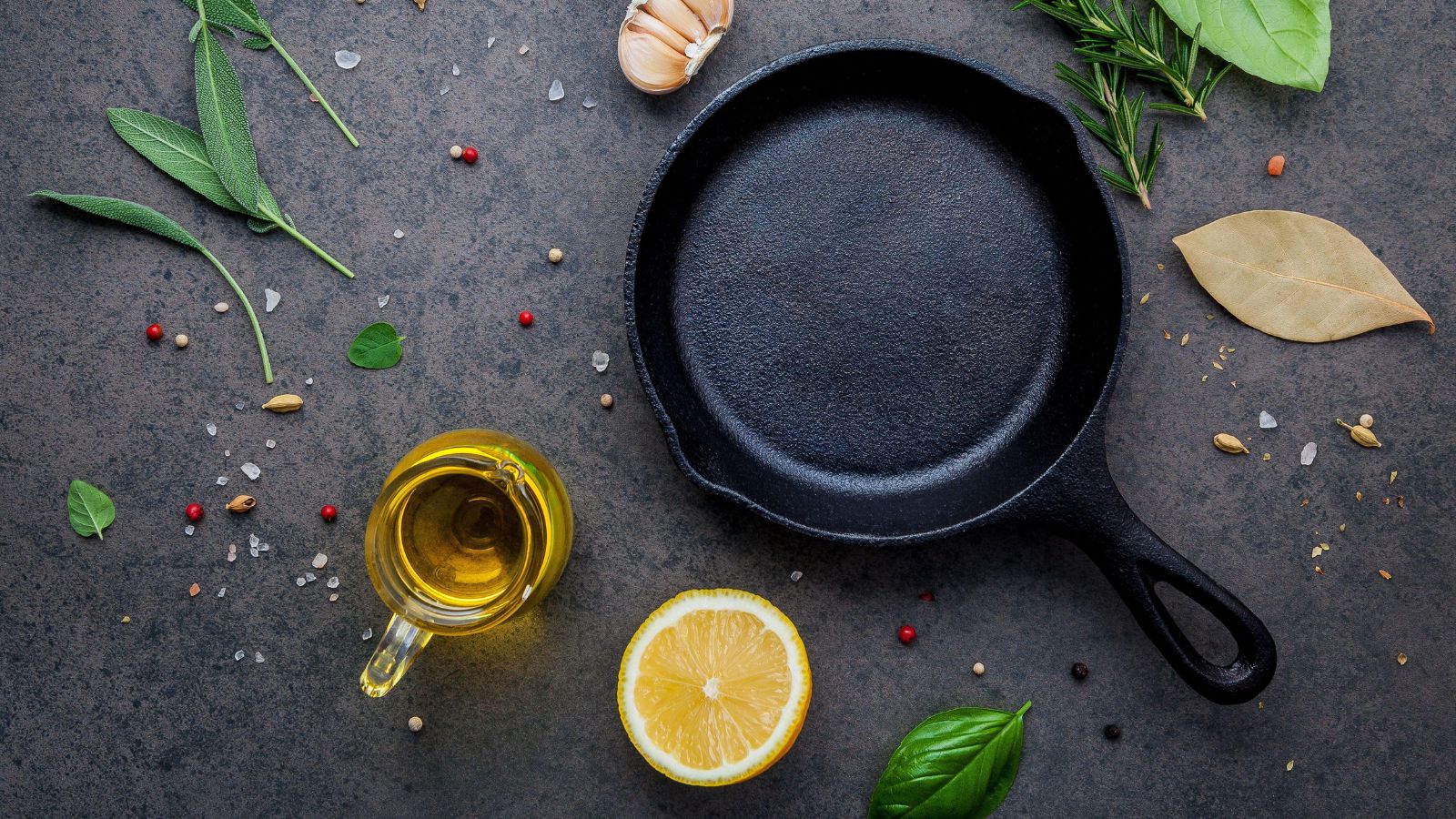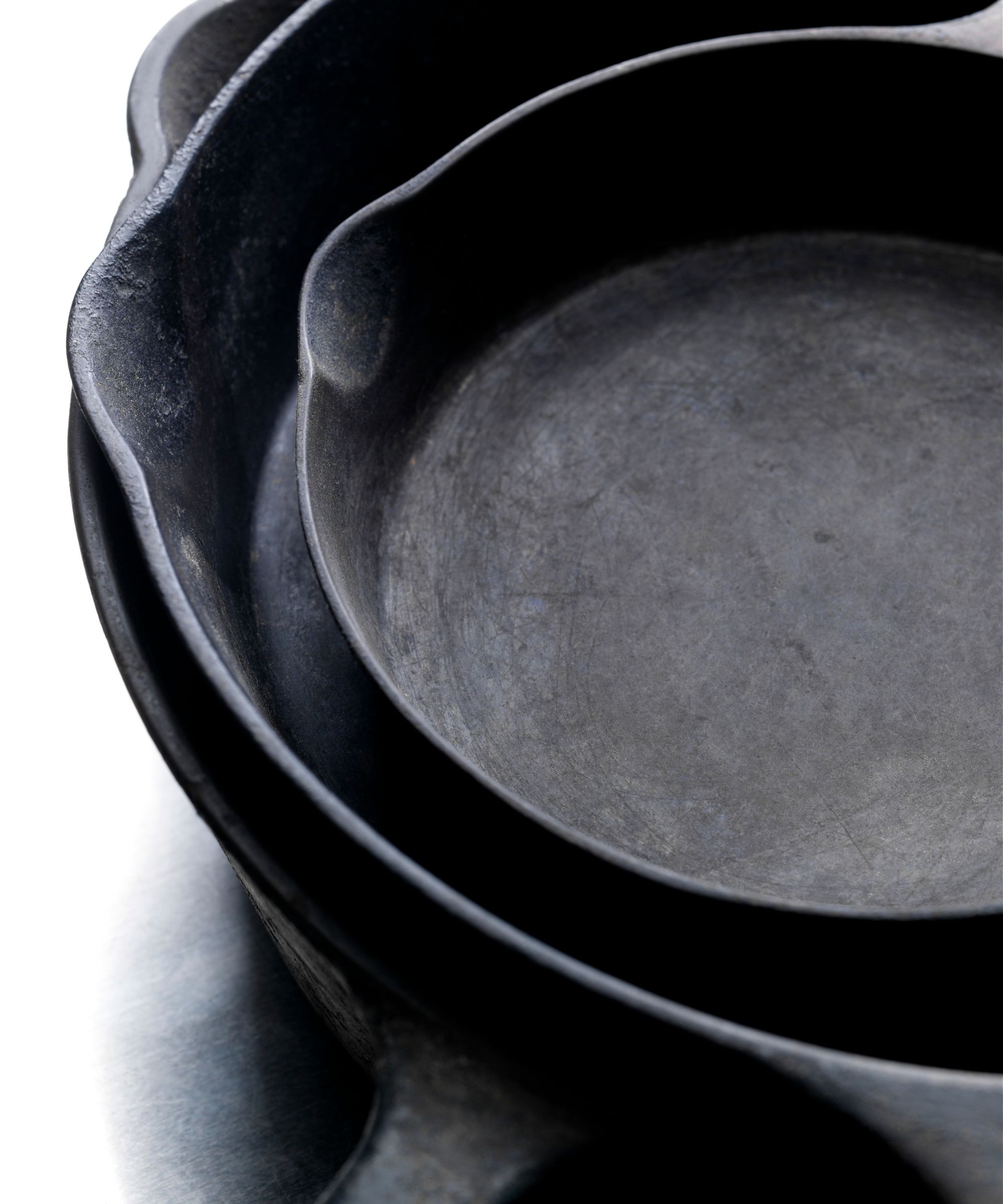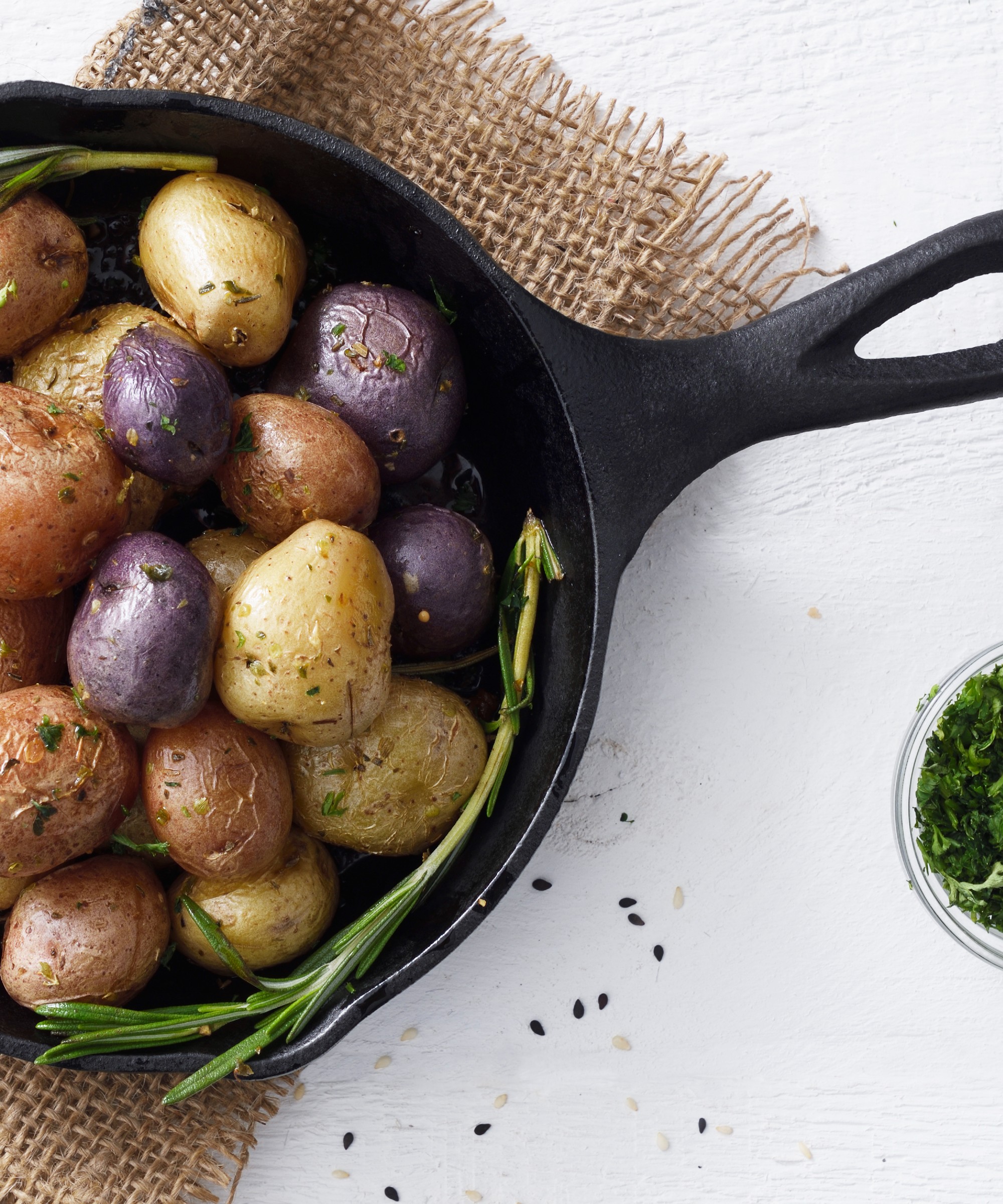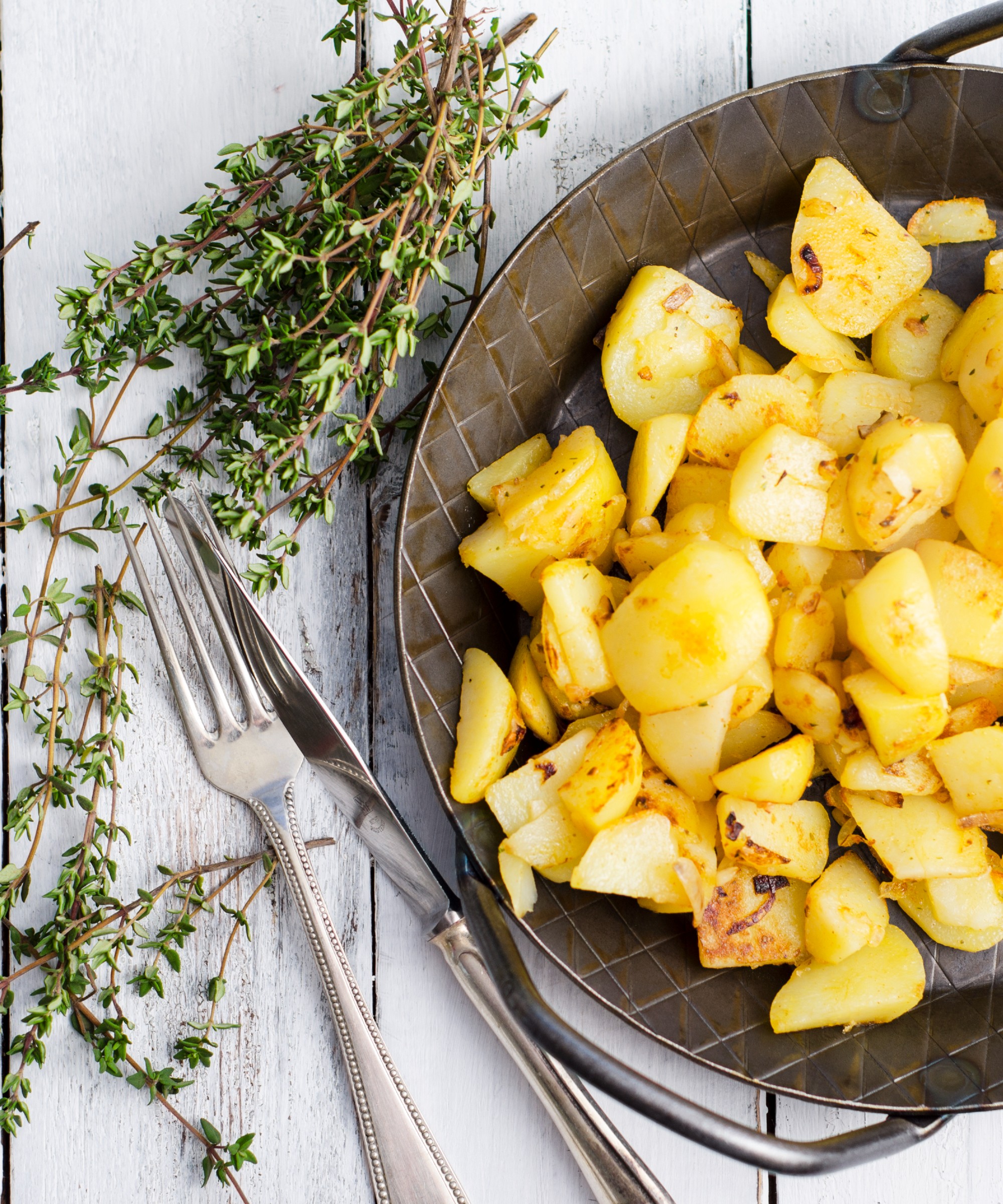Experts explain how to season a cast iron pan – and it isn't as difficult as you may think
Seasoning a cast iron pan is not as convoluted as it sounds, experts explain how to do it at home with no hassle


Cast iron pans are true kitchen staples, but the need to season them every once in a while can seem a daunting time investment for everyday home cooks.
While the best cast iron skillets must be seasoned regularly to ensure even cooking and a long lifespan, the process is not as difficult as you may think, however. In fact, experts have honed the craft so that it takes very little effort.
Here, we break down experts' tips for seasoning a cast iron pan into simple steps.
How to season a cast iron pan
There are plenty of ways to maintain an iron cast pan or skillet, but seasoning regularly and properly is at the top of the list.
Seasoning a cast iron pan is the process of baking fats and oils into the metal at a very high temperature to preserve the metal and provide a non-stick coating, explains chef and nutrition coach, Lisa Marley.
’The fat will eventually form a layer, or polymerize. This will have a dark and glossy finish. This patina [film coating] will also ensure you can cook with less oil and fats, therefore making meals more healthy. It will also help keep the cookware protected from rust and wear and tear.
‘The good news is, the more you use the pan, the better the patina becomes,’ she adds.
Here is how to do it yourself.

1. Clean the pan thoroughly, but carefully, before seasoning
Cleaning cast iron pans is not as simple as throwing them in the dishwasher, or washing them alongside other dishes. This quality metal requires a more delicate touch to keep it in top shape.
‘Before you season the pan for the first time, carefully scrub using a small amount of dish soap, hot water and a sponge. Rinse then dry with a cloth,’ chef and nutrition coach Lisa Marley explains.
Many experts then recommend leaving the soap out after the first seasoning, and just sticking with warm water instead.
2. Pick the proper oils: vegetable, sunflower, or canola
Seasoning cast iron cookware is not about coating it in a fine layer of salt and pepper. Picking the right oils and fats can help to prolong the pan's life and give you a more even cook.
‘The best oils and fats to use are the ones with a high smoke point such as vegetable oil, sunflower oil and canola oil,’ Lisa Marley recommends.
'Depending on the size of the pan, start with one or two tablespoons and use a paper towel to ensure all the surface is coated. Place the pan upside down in the oven. (you may wish to place a baking tray underneath to catch any oil). You will need to bake in the oven for at least one hour on the highest setting. Once cooled, repeat the process.’
3. Repeat the process as and when needed
Seasoning a cast iron pan is not just a one time thing once you have gotten it out of the box.
‘Over time you will need to do this again,’ Lisa Marley points out. ‘You will know when you need to do this as food will start sticking and the dark, glossy look will fade.’
Why seasoning a cast iron pan is important

‘Seasoning your pan is all about the patina,’ begins chef Lisa Marley. ‘Patina is a thin layer that forms on the surface and is acquired through age and exposure. It increases the cooking performance, thereby giving the perfect environment for cooking. It also ensures easy release.
'The patina will also allow the ingredients to be whisked, stirred and flipped (for pancakes and crepes) as it creates a non-stick surface.'
How to clean a seasoned cast iron pan

Once the pan has been properly seasoned, keeping it clean is the next big challenge.
‘The first wash is the one exception to the no-soap rule for new cast iron pots and pans,’ explain the experts at Vonhous, owners of Vonshef. ‘When you first unbox your new pan or skillet, wash it thoroughly with warm water and mild dish soap. This will help rid it of any dust or factory residue, leaving you with a fresh clean slate to get started.
‘After the first wash, it’s best to avoid soap. Try to limit using soap to once every couple of weeks. The best way to clean it after seasoning is using warm water and a good scrubbing brush, along with salt to eradicate any tough marks. Make sure to dry your pan by patting it with a tea towel and leaving it to air dry before putting it away.’
Do you wipe cast iron after seasoning?
After the pan has been seasoned and used, it is best to remove all food and wipe the pan over to remove as much residue as possible before it cools. This will help to preserve the seasoning and prevent the pan from needing a thorough scrubbing when cleaning it out.
What oils should not be used on cast iron?
Oils that are high in saturated fats such as coconut oil and palm oil should not be used to season cast iron pans. These oils lack the chemical make-up required for polymerization – the process needed to develop a perfect cast iron seal. Instead, use unflavored oils with unsaturated fats such as vegetable oil or canola oil.
Sign up to the Homes & Gardens newsletter
Design expertise in your inbox – from inspiring decorating ideas and beautiful celebrity homes to practical gardening advice and shopping round-ups.

Chiana has been at Homes & Gardens for two years and is our resident 'queen' of non-toxic living. She spends most of her time producing content for the Solved section of the website, helping readers get the most out of their homes through clever decluttering, cleaning, and tidying tips. She was named one of Fixr's top home improvement journalists in 2024.
-
 I gave the ‘try-for-five’ method a go in my small home – it's a brilliantly easy way to beat chore procrastination in seconds
I gave the ‘try-for-five’ method a go in my small home – it's a brilliantly easy way to beat chore procrastination in secondsThis method is great for those with executive dysfunction
By Chiana Dickson Published
-
 Josh Brolin’s maximalist living room: love it or hate it? Our readers were split, but where do you stand on this memorabilia-packed space?
Josh Brolin’s maximalist living room: love it or hate it? Our readers were split, but where do you stand on this memorabilia-packed space?Maximalism has a way of dividing opinions among design aficionados, and few spaces are quite as decisive as the actor's unique, yellow living room
By Megan Slack Published